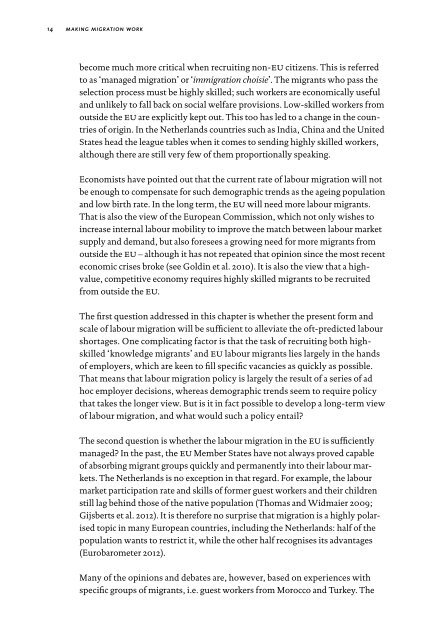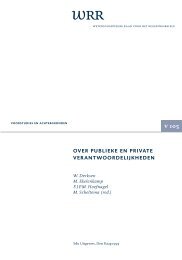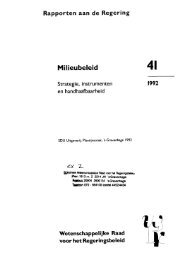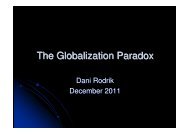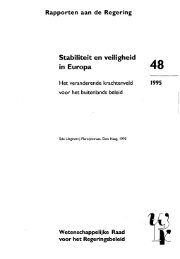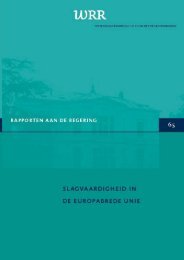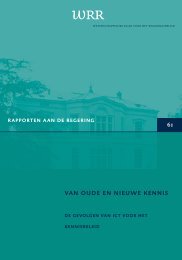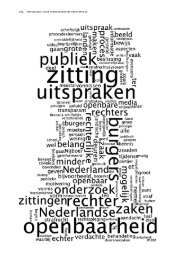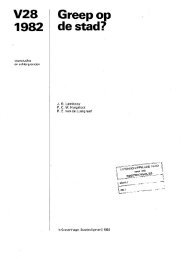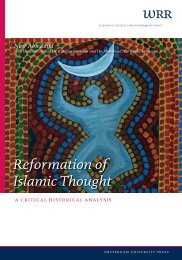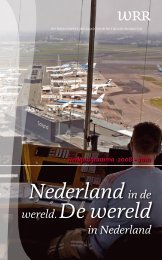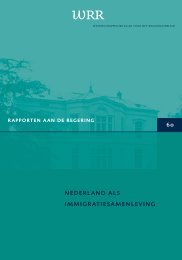Making Migration Work - Wetenschappelijke Raad voor het ...
Making Migration Work - Wetenschappelijke Raad voor het ...
Making Migration Work - Wetenschappelijke Raad voor het ...
- No tags were found...
Create successful ePaper yourself
Turn your PDF publications into a flip-book with our unique Google optimized e-Paper software.
14making migration workbecome much more critical when recruiting non-eu citizens. This is referredto as ‘managed migration’ or ‘immigration choisie’. The migrants who pass theselection process must be highly skilled; such workers are economically usefuland unlikely to fall back on social welfare provisions. Low-skilled workers fromoutside the eu are explicitly kept out. This too has led to a change in the countriesof origin. In the Netherlands countries such as India, China and the UnitedStates head the league tables when it comes to sending highly skilled workers,although there are still very few of them proportionally speaking.Economists have pointed out that the current rate of labour migration will notbe enough to compensate for such demographic trends as the ageing populationand low birth rate. In the long term, the eu will need more labour migrants.That is also the view of the European Commission, which not only wishes toincrease internal labour mobility to improve the match between labour marketsupply and demand, but also foresees a growing need for more migrants fromoutside the eu – although it has not repeated that opinion since the most recenteconomic crises broke (see Goldin et al. 2010). It is also the view that a highvalue,competitive economy requires highly skilled migrants to be recruitedfrom outside the eu.The first question addressed in this chapter is w<strong>het</strong>her the present form andscale of labour migration will be sufficient to alleviate the oft-predicted labourshortages. One complicating factor is that the task of recruiting both highskilled‘knowledge migrants’ and eu labour migrants lies largely in the handsof employers, which are keen to fill specific vacancies as quickly as possible.That means that labour migration policy is largely the result of a series of adhoc employer decisions, whereas demographic trends seem to require policythat takes the longer view. But is it in fact possible to develop a long-term viewof labour migration, and what would such a policy entail?The second question is w<strong>het</strong>her the labour migration in the eu is sufficientlymanaged? In the past, the eu Member States have not always proved capableof absorbing migrant groups quickly and permanently into their labour markets.The Netherlands is no exception in that regard. For example, the labourmarket participation rate and skills of former guest workers and their childrenstill lag behind those of the native population (Thomas and Widmaier 2009;Gijsberts et al. 2012). It is therefore no surprise that migration is a highly polarisedtopic in many European countries, including the Netherlands: half of thepopulation wants to restrict it, while the other half recognises its advantages(Eurobarometer 2012).Many of the opinions and debates are, however, based on experiences withspecific groups of migrants, i.e. guest workers from Morocco and Turkey. The


